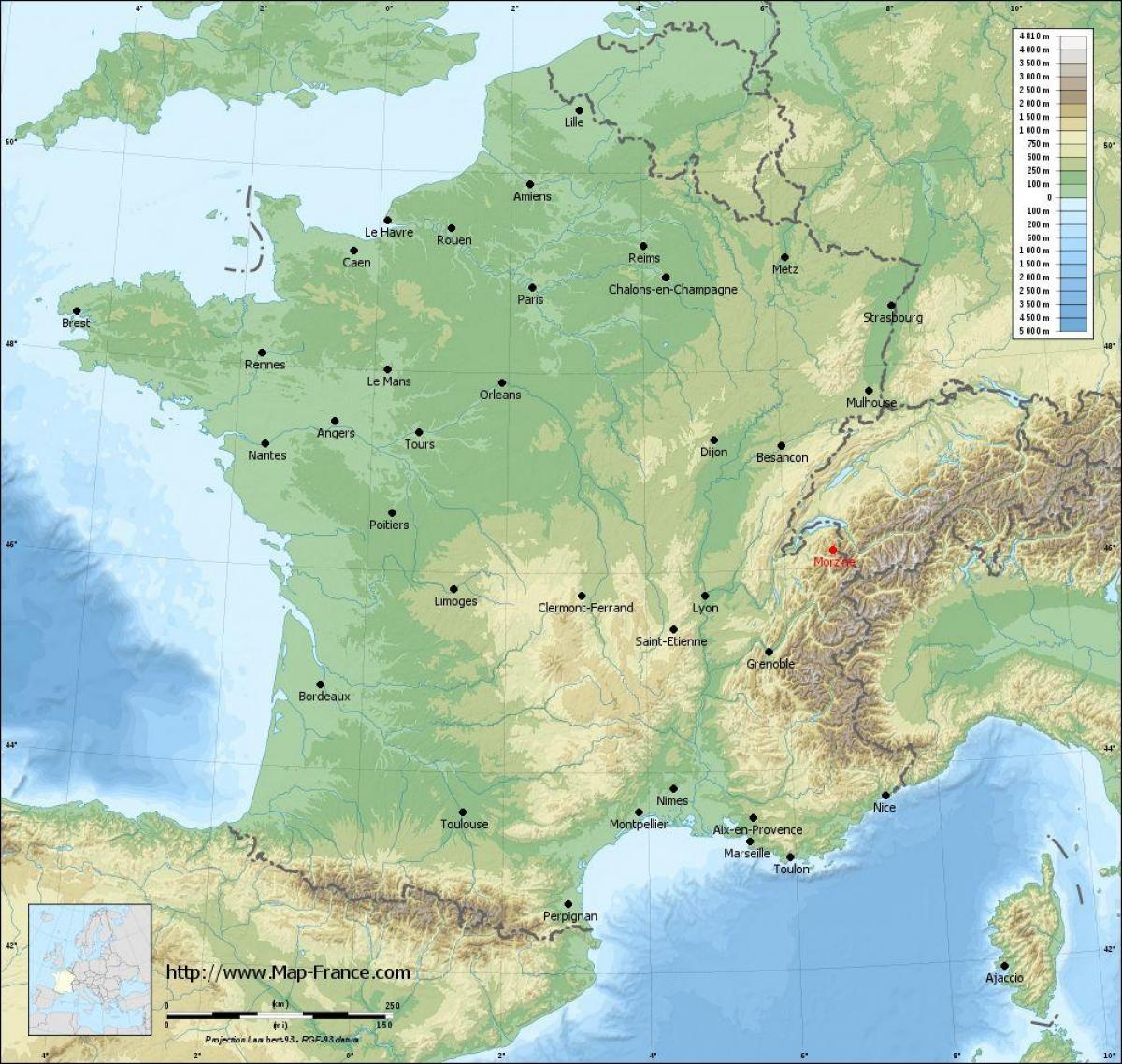search
France relief map
Map of France relief. France relief map (Western Europe - Europe) to print. France relief map (Western Europe - Europe) to download. Three main geologic regions are distinguishable: the skeletal remains of ancient mountains that make up the Hercynian massifs; the northern and western plains; and the higher young fold mountains in the south and southeast, including the Alps and the Pyrenees, with their attendant narrow plains. Much of the detailed relief can be attributed geologically to the varying differences in the resistance of rocks to erosion as its shown in France relief map. A great deal of the present landscape detail is due to glaciation during the Pleistocene Epoch (about 2,600,000 to 11,700 years ago).
France lay outside the range of the great ice sheets that descended upon the northern part of Europe, so the direct sculpting of the land by ice was restricted to the Alps, the Pyrenees, the Vosges, Corsica, and the highest summits of the Massif Central as its mentioned in France relief map. Just outside these glacial areas, in what are known as periglacial lands, repeated freezing and thawing of unprotected surfaces modified slopes by the movement of waste sheets (formed of shattered bedrock), producing very much the landscape that exists today.
Pleistocene periglacial action generated the sheets of the fine windblown limon, or loess, that is the basis of the most fertile lowland soils, and it possibly also created the Landes, a sandy plain in southwestern France as you can see in France relief map. The development of river terraces (flat, raised surfaces alongside valleys) was another characteristic of periglacial action.


